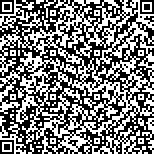| 引用本文: |
肖逸,徐璇,何灏龙,丁攀婷,梁枝懿,杜革术,刘未艾,钟欢,刘密.开四关配合导引治疗延迟性肌肉酸痛的临床疗效观察[J].湖南中医药大学学报,2023,43(11):2054-2060[点击复制] |
|
| |
|
|
| 本文已被:浏览 2670次 下载 937次 |
| 开四关配合导引治疗延迟性肌肉酸痛的临床疗效观察 |
| 肖逸,徐璇,何灏龙,丁攀婷,梁枝懿,杜革术,刘未艾,钟欢,刘密 |
| (湖南中医药大学, 湖南 长沙 410208;湖南中医药大学第一附属医院, 湖南 长沙 410007;长沙市中医医院, 湖南 长沙 410100;湖南中医药大学第二附属医院, 湖南 长沙 410005) |
| 摘要: |
| 目的 探究开四关配合导引治疗延迟性肌肉酸痛(delayed-onset muscle soreness, DOMS)的临床疗效,并初步研究其干预机制。方法 在湖南中医药大学招募并纳入符合标准的受试者36例,依据随机数字表法将其分成观察组、冷疗组及模型组,每组12例。诱发DOMS的方式为蛙跳运动。观察组予以开四关配合肢体及呼吸导引治疗,冷疗组予以冷疗干预,运动后24 h起每天治疗1次,共治疗3次。通过测试受试者的视觉疼痛模拟评分(visual analogue score, VAS)、痛阈、血清肌酸激酶(creatine kinase,CK)、乳酸脱氢酶(lactic dehydrogenase, LDH)、白细胞介素-6(interleukin-6,IL-6)、β-内啡肽(β-endorphin, β-EP)评价临床疗效并探究其效应机制。结果 (1)与模型组相比,观察组、冷疗组VAS评分差异无统计学意义(P>0.05);但是治疗后观察组与冷疗组VAS评分均较治疗前降低,差异有统计学意义(P<0.05)。(2)运动后72 h,观察组痛阈高于模型组,差异有统计学意义(P<0.05);与治疗前相比,观察组和冷疗组第一次治疗后痛阈升高,差异有统计学意义(P<0.05)。(3)与模型组和冷疗组相比,在运动后24、48、72 h时观察组CK含量降低,差异均有统计学意义(P<0.05);与模型组和冷疗组相比,运动后24、72 h观察组LDH含量降低,差异有统计学意义(P<0.05);与模型组相比,运动后72 h观察组IL-6含量降低,差异有统计学意义(P<0.05);与模型组相比,运动后24、48 h观察组β-EP含量降低,差异有统计学意义(P<0.05)。结论 开四关配合导引干预能够改善DOMS症状,尤其是能缓解即刻疼痛、升高痛阈、减轻痛苦,且效果优于冷疗组。开四关配合导引干预可调节 DOMS 后血液CK水平,下调IL-6、β-EP、LDH的含量,以此起到抗炎止痛、调节机体应激反应水平、促进局部损伤修复的作用。 |
| 关键词: 延迟性肌肉酸痛 开四关 导引 VAS 痛阈 炎症 损伤修复 临床疗效 |
| DOI:10.3969/j.issn.1674-070X.2023.11.019 |
| 投稿时间:2023-07-10 |
| 基金项目:国家重点基础研究发展计划“973”计划(2015CB554502);湖南省中医药科研计划项目(B2023107);国家中医药管理局2022年青年岐黄学者培养项目(国中医药人教函〔2022〕256号);湖南省“芙蓉学者奖励计划”(湘教通〔2020〕58号);湖南省科技人才托举工程项目(2019TJ-Q04);湖南省研究生科研创新项目(QL20210177);湖南省针灸推拿学研究生联合培养基地项目(湘教通〔2022〕357号)。 |
|
| Clinical observation of acupuncturing at Siguan points combined with Daoyin in treating delayed-onset muscle soreness |
| XIAO Yi,XU Xuan,HE Haolong,DING Panting,LIANG Zhiyi,DU Geshu,LIU Weiai,ZHONG Huan,LIU Mi |
| (Hunan University of Chinese Medicine, Changsha, Hunan 410208, China;The First Hospital of Hunan University of Chinese Medicine, Changsha, Hunan 410007, China;Changsha Hospital of Chinese Medicine, Changsha, Hunan 410100, China;The Second Hospital of Hunan University of Chinese Medicine, Changsha, Hunan 410005, China) |
| Abstract: |
| Objective To explore the clinical efficacy of acupuncturing at Siguan points[Hegu (LI4) and Taichong (LR3)] combined with Daoyin (guiding and stretching) in treating delayed-onset muscle soreness (DOMS) and to preliminarily study its intervention mechanism. Methods A total of 36 eligible subjects were recruited and included in Hunan University of Chinese Medicine and assigned to observation, cold therapy, and model groups by random number table method, with 12 cases in each group. DOMS was induced by frog jumping exercise. The observation group was treated with acupuncturing at Siguan points combined with limb and respiratory Daoyin, while the cold therapy group was treated with cold therapy intervention. Starting from 24 hours after exercise, the corresponding treatment was given once a day for a total of three times. The subjects' visual analogue score (VAS), pain threshold, serum creatine kinase (CK), lactic dehydrogenase (LDH), interleukin-6 (IL-6), and β-endorphin (β-endorphin, β-EP) were tested to evaluate the clinical efficacy and explore its effect mechanism. Results (1) Compared with the model group, there was no statistically significant difference with VAS scores of the observation group and the cold treatment group (P>0.05); however, VAS scores in the observation group and the cold treatment group after treatment were lower than those before treatment and the difference was statistically significant (P<0.05). (2) Seventy-two hours after exercise, the pain threshold of observation group was higher than that of the model group, with a statistically significant difference (P<0.05); compared with that before treatment, the pain threshold of the observation group and the cold treatment group increased after the first treatment, and the difference was statistically significant (P<0.05). (3) Compared with model group and cold therapy group, the CK content in the observation group decreased significantly at 24, 48, and 72 h after exercise (P<0.05); compared with the model group and the cold therapy group, the LDH content in the observation group decreased at 24 and 72 h after exercise, and the difference was statistically significant (P<0.05); compared with the model group, the IL-6 content in the observation group decreased at 72 h after exercise, with a statistically significant difference (P<0.05); compared with the model group, the β-EP content in the observation group decreased at 24 and 48 h after exercise, and the difference was statistically significant (P<0.05). Conclusion Acupuncturing at Siguan points combined with Daoyin can relieve symptoms of DOMS, especially in relieving immediate pain, raising pain threshold, and alleviating the suffering, with better effects than cold treatment group. The intervention can regulate the blood CK level after DOMS and downregulate the content of IL-6, β-EP, and LDH, so as to achieve the effects of anti-inflammation, relieving pain, regulating the level of body stress response, and promoting local damage repair. |
| Key words: delayed-onset muscle soreness acupuncturing at Siguan points Daoyin visual analogue score pain threshold inflammation damage repair clinical efficacy |
|

二维码(扫一下试试看!) |
|
|
|
|




